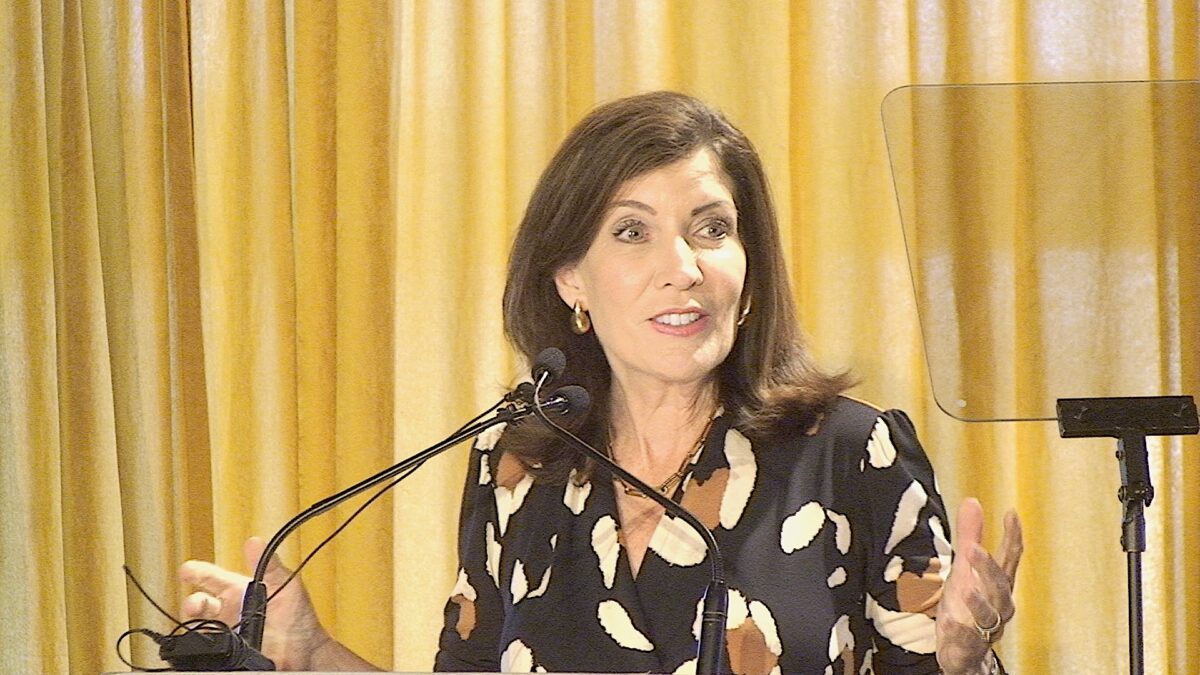
Watch Doris Bucher and her team of flu-fighting scientists in action in a video by the Business Journals.
“We”™ve been celebrating,” says Doris Bucher, leading us down a hall lined with labs and offices behind closed doors in the microbiology and immunology department at New York Medical College. “We just had a new Ph.D. today. He defended his thesis.”
“It”™s sort of offseason now,” she says. We are in a small lab where two members of her team of about a dozen research scientists and students work with a variant of the H3N2 virus. It was sent here by the federal Centers for Disease Control and Prevention. It”™s a swine flu bug ”“ some pig handlers at agricultural fairs have been infected ”“ but let”™s not get alarmed just yet. This is no pandemic.
There are no signs or sounds of postdoctoral revelry in the research rooms where Doris Bucher, an associate professor in the college”™s Graduate School of Basic Medical Sciences, for 26 years has led a team of flu-fighting scientists. Theirs is an ever-renewed battle against an unpredictable, gene-changing foe. There are the type A viruses, H1N1 and H3N2, and the B virus and 16 subtypes that threaten to make humans miserable each flu season.
In labs and incubation rooms using equipment both vintage ”“ a 1935 egg candler ”“ and state-of-the-art protein-measuring liquid chromatography and gene analysis machines and software ”“ Doris Bucher”™s team develops virus seed strains that manufacturers worldwide use in vaccines. Grown in embryonic chicken eggs into which current “wild” viruses are injected along with a control virus first identified in 1934, the resulting high-yield reassortant viruses are then tested in ferrets at the Centers for Disease Control before mass production.
The flu-fighting laboratory is funded by the International Federation of Pharmaceutical Manufacturers and Associations (IFPMA), a nonprofit consortium based in Geneva, Switzerland. It saves the college a bundle just on the cost of the pathogen-free research eggs supplied by Charles River Avian Vaccine Services in Connecticut. They are priced at more than $4 each.
“We do about 80 eggs each week,” says Doris. “During peak season, we”™re getting up almost to 1,000.”
During the especially virulent flu season this past winter, New York Medical College strains were used in hundreds of millions of flu-shot doses in the U.S. and worldwide. .
“They work! They work!” she tells a skeptical videographer from the Business Journal, who did not get a flu shot this year. She did, though, get a wicked case of the flu.
Of course, those flu shots do not always work for everyone. In the U.S., the CDC reported last month, the vaccine reduced the risk of visits to medical offices because of the flu by one-half to two-thirds for most persons. In combating the H3N2 bug, though, the vaccine was effective only among 9 percent of persons 65 or older who heeded the exhortations of President Obama and Governor Cuomo to get their flu shots.
That low rate is highly unusual, says Doris, but don”™t blame it on her lab in Valhalla.
“This year was a bad flu year. And the H3N2 flu component (in the vaccine) was from Australia. That was not ours.”
The wild virus isolated in a patient in Australia during the summer flu season there was not sent to Valhalla until January last year, when manufacturers were starting up vaccine production for the northern season. Though the team was able to develop an H3N2 seed strain in little more than a month, the Australian version already was in use.
Not-so-friendly competition among scientists? Doris smiled. “Sometimes they”™re slow” to exchange viruses in the World Health Organization”™s collaborative network. “And sometimes they say we”™re slow.”
“You”™re welcome to take credit for his one,” she says, as if addressing the Aussies. Doris laughs. “But their strain was the same as our strain. We would have had the same problems.”
“We move as quickly as we can to get everything out to everybody. Our problem this year was there was so much demand, we had to replenish our stock.”
Twice a year, in February and September, the World Health Organization meets to select and recommend seed strains that will be used in vaccines against the viruses expected to dominate in the next flu seasons in the northern and southern hemispheres. Doris Bucher traveled to Switzerland last month for the conference.
She was not far from her ancestral home. Hans Bucher, a member of the persecuted Church of the Brethren in Switzerland, arrived in Pennsylvania in 1730. “He was a peasant and a surgeon,” Doris says. She grew up on her family”™s farm in Pennsylvania Dutch country and studied foods and nutrition at Penn State University before receiving her doctorate from the University of California at Berkeley.
She returned from Geneva with good news. The WHO recommended that this year”™s H3N2 vaccine component include a reassortant made with a wild virus from Texas. The lab at New York Medical College is its developer. “This one grows quite well, this Texas virus,” she says.
“This year a number of the manufacturers are going to be using our H1N1, our H3N2, our B.”
Had those strains been around in 1969, Doris Bucher might have been spared a case of the Hong Kong flu that sent her to a hospital in Houston ”“ and perhaps inspired a career.
“They turned me away. They said, just go home, take some aspirin. I thought I was going to die. I was really, really sick for about a week. I had an intense headache.”
Now she has no plans to retire from the field of battle. The excitement outweighs the occasional headaches of running a world-class lab.
“I”™m having too good a time,” she says, “My mother”™s 99. If you”™re having a good time, why retire?”



















